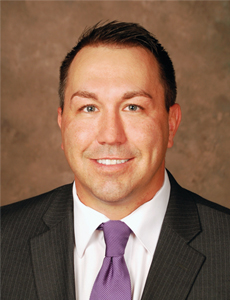2014 Risk All Stars: Latitia Estrada & Chris Chathams
Team Tackles Timber Safety Gaps
“There are so many injuries in our industry. It’s inherently dangerous,” said Latitia Estrada, human resources generalist and grant coordinator for Timber Products Manufacturers Association (TPM).

Latitia Estrada, human resources generalist and grant coordinator, Timber Products Manufacturers Association
She and Chris Chathams, TPM’s safety resource director, work to make their members safer. Through OSHA and state grants available for nonprofits, the two have been able to develop multiple training programs to provide at no cost to both member organizations and non-members in the area.
“One of the programs we facilitated was combustible dust training,” Chathams said, which was developed with the help of a $250,000 OSHA grant in 2009. “It focuses on recognition of combustible dust, compliance with federal and state laws, and mitigation techniques, so the members we serve can improve safety and health programs by eliminating combustible dust.”
Their second project is a larger undertaking, utilizing a four-year developmental grant.
“We’re designing a program, almost a school, that takes you from logging raw timber out in the forest all the way through the manufacturing process in the sawmill,” Estrada said. “No matter where an employee falls in that process, there’s some sort of safety resource for them.”
About half of TPM’s members use the training programs in some way, whether it’s attending webinars, completing worksheets or participating in safety videos filmed on-site. In all, TPM’s programs have served up to 150 companies throughout the Northwest region.
“We’ve seen companies reduce accidents and injuries by up to 75 percent in a three-year span,” Chathams said. “Once they adopt the hazard awareness techniques we train, it’s almost like flicking on a light switch. Their injury claims just start dropping.”
The training programs filled a gaping hole in the industry’s needs, according to Estrada. “These resources don’t exist outside of us, which is why we’re funded.”
Chathams estimated that they have saved small companies more than $134,000 in training costs alone. “We cannot begin to estimate the cost savings by lowering injury rates through education,” he said.
April Kersch, safety and environmental coordinator at Sun Mountain Lumber in Deer Lodge, Mont., praised the pair’s efforts.
“From brainstorming sessions to webinars to on-site training, they provide excellent, well-researched material that is relevant to our industry,” she said. “They act as a hub in a very large wheel.”
“We’ve had Chris come in for multiple presentations and to point out safety hazards,” said Mikal Zemjlak, safety and environmental manager for Pyramid Mountain Lumber in Seeley Lake, Mont. “It’s definitely helped to change our culture. And he always gets back to me right away if I have a question.”
The team currently has a grant submission in process to develop an app that would help users evaluate and identify combustible dust.
“OSHA is very excited about it,” Chathams said. “We think we can really get into the safety market with the tools everyone is using right now.”
The market seems ready to respond. With modules and training sessions currently booked at least three months in advance, TPM has had to hire another safety trainer just to cover requests for their service.
Responsibility Leader
Latitia and Chris are also being recognized as a 2014 Responsibility Leaders.
Filling a Need for Safety
Saws and heavy lumber make the timber and wood products industry inherently dangerous. But many small companies lack resources to provide adequate safety training to employees.
Enter Latitia Estrada and Chris Chathams of Timber Products Manufacturers Association (TPM). The duo leveraged their nonprofit status to win government grants to create and provide training to member organizations at no cost.
The training programs, consisting of webinars, worksheets, and videos, bring awareness to the highest-risk areas of the industry, all the way from logging in the forest to working a sawmill on the factory floor.
Over the past two years, more than 80 employers and 2,200 employees in seven different states have received training.
The pair estimates they’ve saved participating companies more than $134,000 in training costs alone, not including costs saved by lowering injury rates.
One company was able to slash their injury rates by 50 percent.
Chathams and Estrada have also widened TPM’s involvement within the safety industry.
They’ve worked with different chapters of the American Society of Safety Engineers, the Northern Idaho Safety Fest and the Montana Safety Fest.
Looking to the future, they’ve also helped TPM create a safety scholarship and internship program.
_____________________________________________
 Risk All Stars stand out from their peers by overcoming challenges through exceptional problem solving, creativity, perseverance and/or passion.
Risk All Stars stand out from their peers by overcoming challenges through exceptional problem solving, creativity, perseverance and/or passion.
See the complete list of 2014 Risk All Stars.
 Responsibility Leaders overcome obstacles by doing the right thing over the easy thing to find practical solutions that benefit their co-workers and community.
Responsibility Leaders overcome obstacles by doing the right thing over the easy thing to find practical solutions that benefit their co-workers and community.
Read more about the 2014 Responsibility Leaders.










